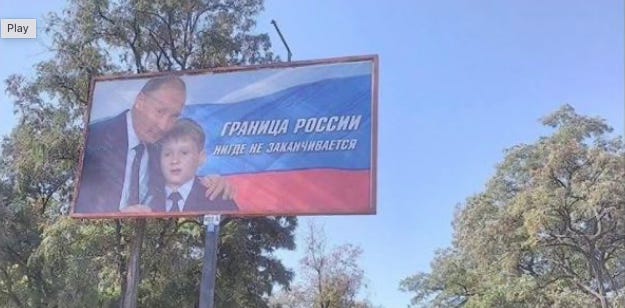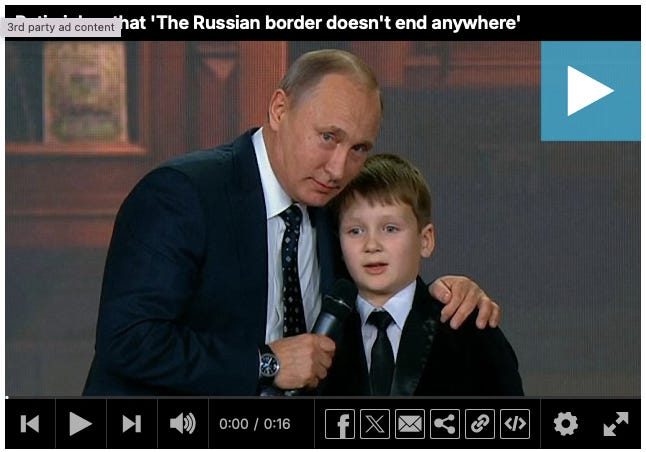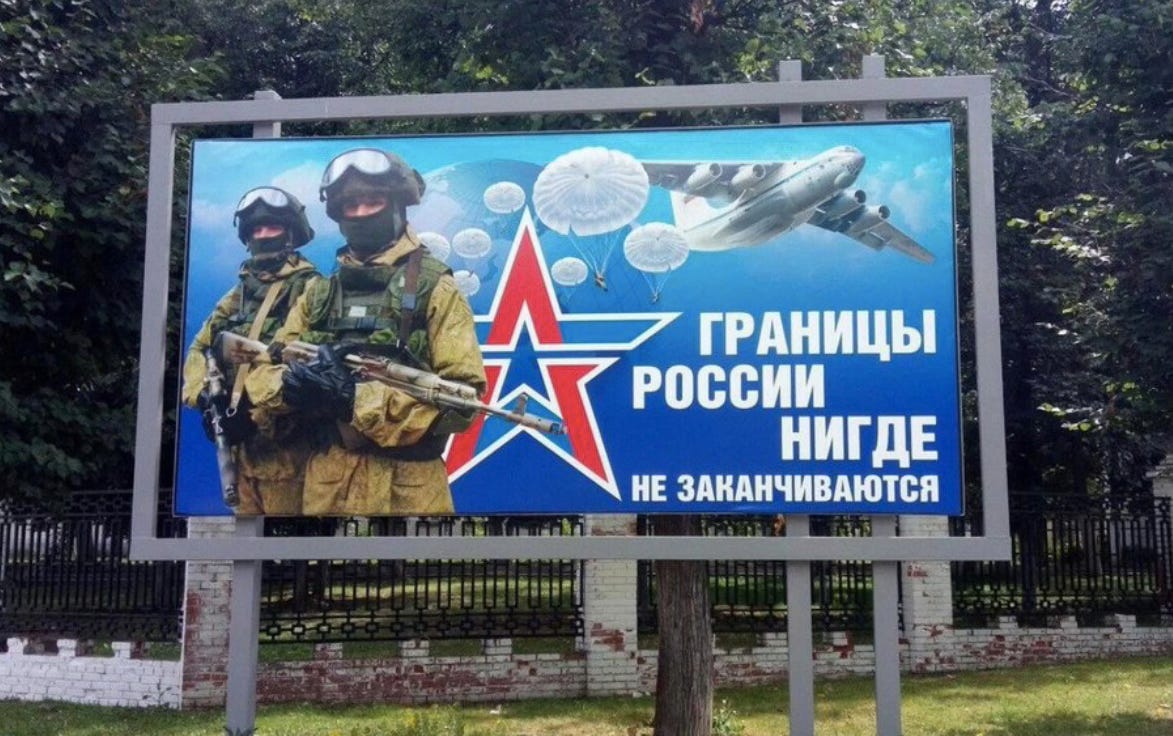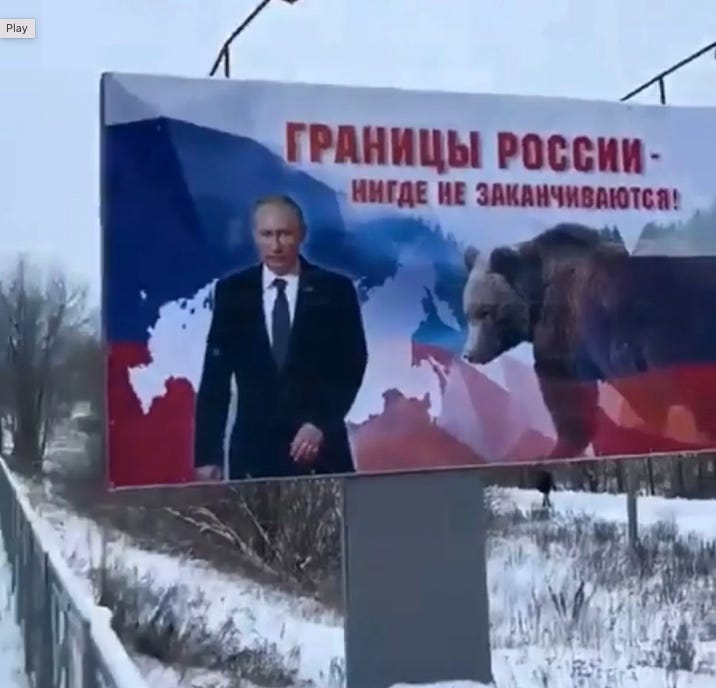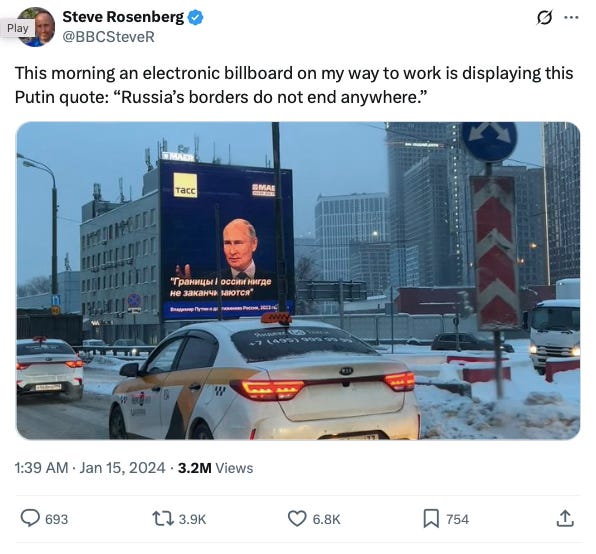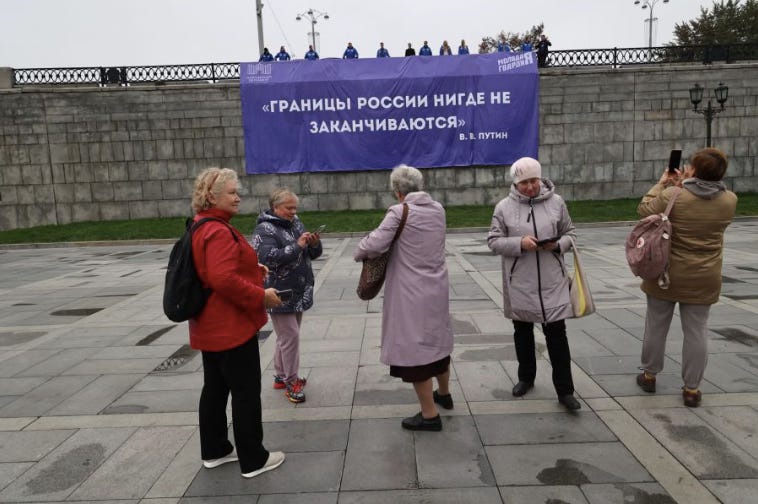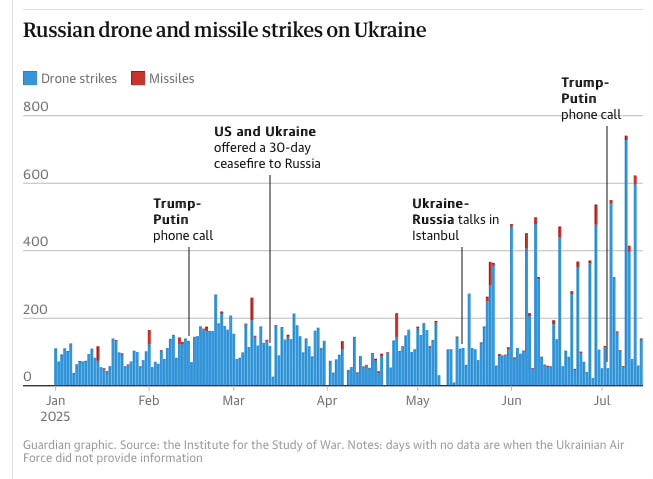Not a Normal Country
Russia's never-ending reconquests
(A billboard in Russian-occupied Ukrainian Luhansk in 2017. The text reads: ‘Russia’s border does not end anywhere’.)
When I lived in Moscow in the mid-1990s many Russians asked — with genuine concern — “When will we live in a normal country?”
The USSR was gone. Putin was a nobody. Yet still they asked — because of endemic poverty, gangland killings in the streets, brutal armed conflict in Chechnya.
Most Russians fail to understand their country’s original sin.
For well over a century, Russia has been abnormal — but not because of economic hardship, organized crime or domestic revolt.
Russia is singularly atypical because – after others decolonized – it remains an empire. While peers (except China) mostly withdrew from foreign territories and independent states, Russia unapologetically renewed patterns of coercion and naked aggression.
Since 1917, Moscow has lost three empires – only to regain them by force.
The first case was the revolution itself. Belarus, Estonia, Finland, Latvia, Lithuania, Poland and Ukraine declared independence. In the Caucasus, Armenia, Azerbaijan and Georgia did the same, as did Bukhara, Khiva and the Basmachi in Central Asia. In European Russia and Siberia, many others followed suit, including Bashkiria, Buryat-Mongolia, Chuvashia, Ingria, Karelia, the Tungus Republic and Yakutia.
By the time the Soviet Union was formed in 1924, Moscow had reconquered all but the Baltic states, Finland and Poland. In a secret annex to the 1939 Molotov-Ribbentrop pact, Stalin’s USSR reclaimed half of Poland, the Baltic states, Finland and part of Romania. By early 1941, only Finland was still partly free.
The second case was Nazi invasion. By autumn 1942, Hitler’s forces had advanced into the outskirts of Moscow and St. Petersburg and reached the Volga at Stalingrad and Vladikavkaz in the Caucasus. The Nazis effectively occupied all the territory they had ‘given’ Stalin in 1939. Then the tide turned. By 1945 the Soviet Union – with considerable American, British and other allied assistance – had regained this territory and was occupying the entire future Warsaw Pact.
The third case was the Soviet Union’s collapse on December 26th, 1991. Russia subsequently fought two wars in Chechnya, while maintaining forces in five now-independent states. Under Putin, the inertia of occupation curdled into renewed aggression. Moscow imposed a union treaty on Belarus in December 1999; sponsored countless corrupt parties and regimes; invaded Georgia, Kazakhstan and Ukraine. Russia’s fascist army today occupies eighteen percent of Ukraine’s territory; in 2022, Moscow illegally claimed to have annexed Crimea, Donetsk and Luhansk.
In summary, after each world war Moscow reconquered an empire it had lost in war. After the 1991 dissolution of the Warsaw Pact and Soviet Union, Russia sought to regain its empire first by subversion, then by invasion.
In 1939, Moscow’s aggression against Finland destroyed the League of Nations. Its repressive post-1945 occupation of Central Europe triggered the Cold War. Its invasions of Ukraine led to escalating sanctions and isolation of Russia.
No normal country behaves like this.
(Putin with nine-year-old geography prodigy Miroslav Oskirko at a Russian Geographical Society awards ceremony in the Kremlin on November 24th, 2016)
Far from being defensive about this aggression, Vladimir Putin joked publicly, at a geography awards ceremony in 2016, that “Russia’s borders do not end anywhere.”
(Russian billboard with the same slogan, August 2022)
Billboards in occupied Ukrainian Donbas displayed this slogan, as did military recruitment posters and billboards facing Estonia.
(Russian poster facing Estonian border, December 2023)
On the eve of one of Putin’s most aggressive speeches, the same slogan appeared again on billboards in Moscow. By October 2023, Putin’s double was passing it off as a joke and claiming China, India and others also saw their civilizations as borderless.
In early 2024, the phrase was back up on an electronic billboard in central Moscow:
Will Russia ever be normal? Will it get out of Ukraine? Will it stop invading and occupying other countries? Will aggression stop being its national purpose?
On past performance, no one should be holding their breath. Let’s be honest: a country that rejects the notion of recognized international borders is unlikely to be at peace. At the June 20th St Petersburg economic forum, Putin’s double said it was a rule that “where the foot of a Russian soldier steps, that is ours.”
(Banner in Yekaterinburg in September 2023 reading: “‘Russia’s borders do not end anywhere’ V.V. Putin”)
As we have learned, today’s fascist Kremlin sees Trump, Bannon, Carlson, Farage, Le Pen, Orban, Fico, Wagenknecht, Weidel and many others as ‘soldiers’ — helping to widen and sustain the borderless empire centred on Moscow.
As this Guardian graph shows, it’s an empire whose attacks are intensifying:
In the end, the only way to hold a perennial rogue state to account is by setting ‘normal’ goals and achieving them. We can embargo Russia’s economy. We can starve its war machine of funds it needs to continue fighting. We can indict as war criminals those who kidnap children or target civilians with drones. We can defeat Russia on the battlefield and liberate all of Ukraine.
It is, after all, normal to defend borders and sovereignty.
Afghans defeated the Soviet army in the 1980s. Finns withstood Soviet invasion in 1939-40. Poland defeated Russia in 1920, as Japan did in 1905.
Britain, France and the Ottoman empire inflicted a crushing defeat on Moscow in 1853-56, when the main battlefields were in Crimea.
In 2022, fighting virtually alone, Ukraine withstood and defeated Russia’s full-scale invasion. If we want respect for borders to continue — and even to be normal again — allies including Canada need to finish the job and win the war.



